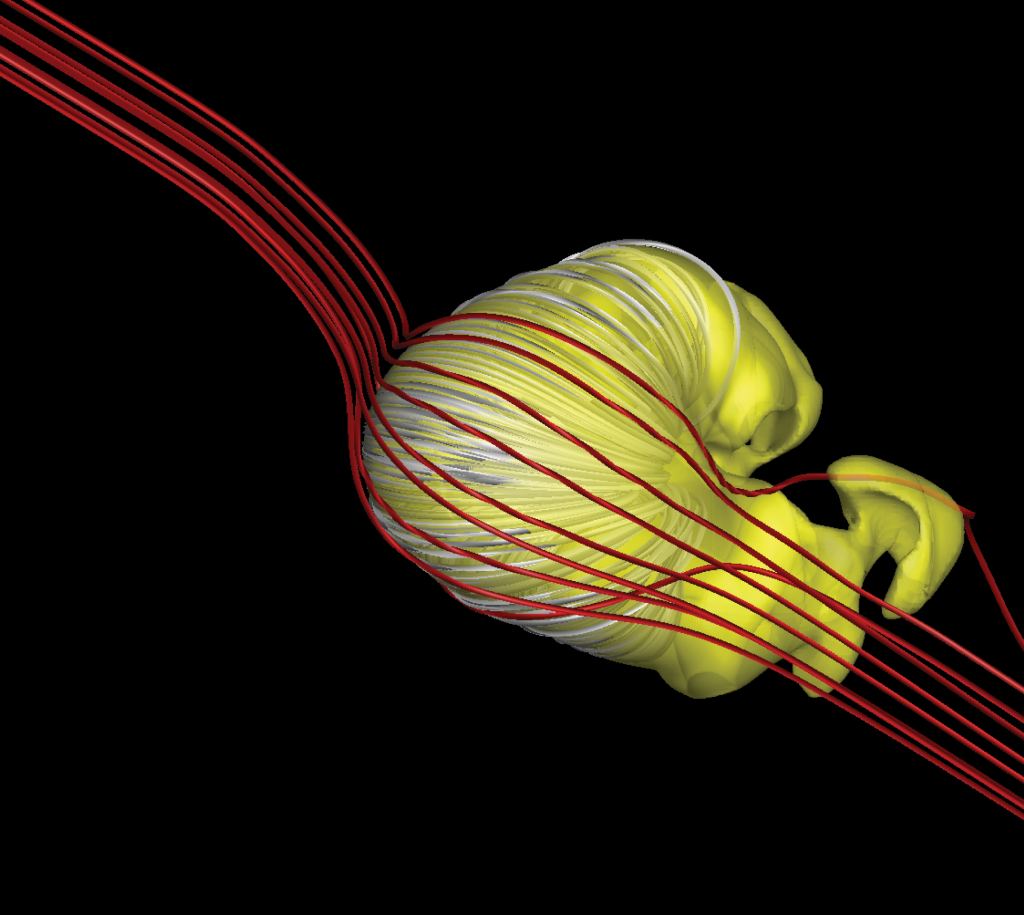Solving a Solar System Mystery With Ancient Star Explosion Evidence From the Deep Sea

A mystery surrounding the space around our solar system is unfolding thanks to evidence of supernovae found in deep-sea sediments.
Professor Anton Wallner, a nuclear physicist at ANU, led the study which shows the Earth has been traveling for the last 33,000 years through a cloud of faintly radioactive dust.
“These clouds could be remnants of previous supernova explosions, a powerful and super bright explosion of a star,” Professor Wallner said.
While you're here, how about this:
Interact Virtually with NASA's Mars 2020 Perseverance Rover on 'Eyes on the Solar

(NASA) –The last time we saw NASA’s Mars 2020 Perseverance rover mission was on July 30, 2020, as it disappeared into the black of deep space on a trajectory for Mars.
But with NASA’s Eyes on the Solar System, you can follow in real-time as humanity’s most sophisticated rover – and the Ingenuity Mars Helicopter traveling with it – treks millions of miles over the next six months to Jezero Crater.
“Eyes on the Solar System visualizes the same trajectory data that the navigation team uses to plot Perseverance’s course to Mars,” said Fernando Abilleira, the Mars 2020 mission design and navigation manager at NASA’s Jet Propulsion Laboratory in Southern California.
There might once have been a second sun in our solar system
Our Sun may once have had a twin companion, astronomers have suggested – like the "binary" stars of Tattooine in Star Wars .
Harvard researchers have said another sun was present as the solar system formed, and it could explain features including a cloud of debris at our solar system's edge.
The find could throw light on events such as the arrival of water on our planet and even the extinction of the dinosaurs, the researchers believe.
NASA data helps uncover our solar system's shape | EurekAlert! Science News

IMAGE: An updated model suggests the shape of the Sun's bubble of influence, the heliosphere (seen in yellow), may be a deflated croissant shape, rather than the long-tailed comet shape suggested... view more
* * *
Scientists have developed a new prediction of the shape of the bubble surrounding our solar system using a model developed with data from NASA missions.
All the planets of our solar system are encased in a magnetic bubble, carved out in space by the Sun's constantly outflowing material, the solar wind. Outside this bubble is the interstellar medium -- the ionized gas and magnetic field that fills the space between stellar systems in our galaxy. One question scientists have tried to answer for years is on the shape of this bubble, which travels through space as our Sun orbits the center of our galaxy.
In case you are keeping track:
"The Water Paradox" --Present from Earth's Birth in a Forbidding Region of the Solar System | The
Thanos Was Originally Born in Earth's Own Solar System

One of Thanos's nicknames – the Mad Titan – provides a major clue as to his place of birth: a mere 890 million miles from Earth on Saturn's largest moon, Titan. The only moon in our solar system known to have a dense atmosphere, Titan is also the only known body in space other than Earth where surface liquid has been found.
* * *
Robert has been reading comics since the Bronze Age, i.e. before most of you reading this were born. He owned and operated a comic book specialty store in Southern California for 16 years and has written comics professionally for publishers such as Image Comics and Avatar Press.
This is What the Solar System Really Looks Like - Universe Today

At first glance, it looks like something from an alien autopsy. A strange organ cut from a xenomorph’s thorax, under the flickering lights of an operating room in a top secret government facility, with venous tendrils dangling down to the floor, dripping viscous slime. (X-Com anyone?)
* * *
This strangely fascinating shape is actually a graphic representation of what our Solar System looks like, or rather the magnetic bubble that surrounds our Solar System. It’s a representation of the heliosphere, a massive bubble carved into space by the Sun’s constant outflow.
Daytime solar subsidies to be slashed as WA moves to head off grid overload - ABC News

Subsidies to West Australian households that pump solar power to the grid during the middle of the day are set to be slashed in a bid to avoid the risk of renewable energy overloading the state's electricity system.
The WA Government, however, will boost payments to customers exporting solar power into the network during peak times under a long-awaited shakeup of a key green energy incentive scheme.
Experts say the overhaul is a sign of things to come for the rest of Australia — and long overdue, given that millions of rooftop solar systems are installed across the country.
Happening on Twitter
Comprehensive, hugely-researched piece from @Niall_Sargent @noteworthy_ie on why the hell we're not all putting… https://t.co/WU2G8avRIW BiddyEarly (from Dublin, Ireland) Sun Aug 30 21:07:37 +0000 2020
Power Down: How years of policy neglect left Ireland in the shadow of a solar revolution ☀️ The @noteworthy_ie te… https://t.co/i2bWHWxFvT thejournal_ie (from Ireland) Sun Aug 30 20:05:00 +0000 2020
Our latest investigation is out now!! @Niall_Sargent examines the key roadblocks that have limited small-scale so… https://t.co/xT00ZeTbjK mhdelaney (from Ireland) Sun Aug 30 20:09:15 +0000 2020
CA's outages show that gas is unreliable, as generators were out of service/operating below capacity when needed! "… https://t.co/sNYnBLdjRT SierraClub Sun Aug 23 21:30:18 +0000 2020
Comments
Post a Comment